It’s a three-dog night. You might know that this saying refers to a night so cold that it takes three dogs to keep you warm. The saying is believed to have originated from the Inuit culture, where dogs were used for warmth during cold nights. It’s good to know that your dog can keep you warm in a tent, but can dogs stay warm in a tent?
A dog can stay warm in a tent. When attempting to keep your dog warm in a tent, there are some factors to consider including the temperature outside, the type of tent, the size and breed of the dog, and the dog’s coat.
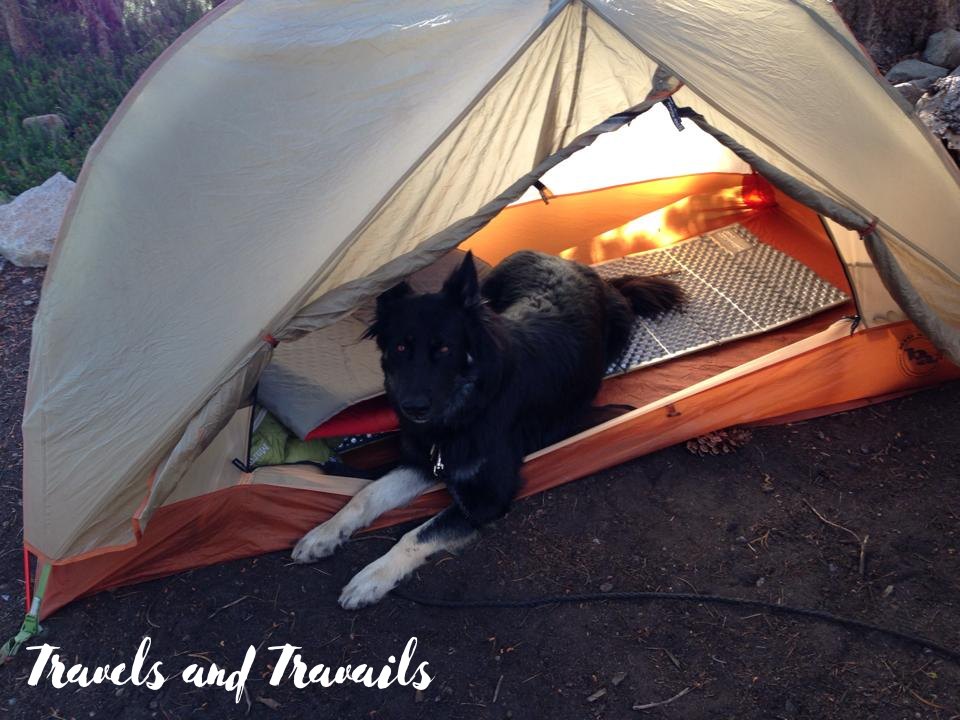
As temperatures drop, it can be challenging to keep your dog warm in a tent, especially if they are not used to cold weather. But with the right preparation and gear, you can provide your dog with a cozy and warm environment, even on the coldest of nights. In this blog, we’ll share some tips and tricks to keep your dog warm in a tent, so you and your furry companion can enjoy a comfortable and memorable camping trip together.
Temperature Outside the Tent You and Your Dog are Using
If the temperature outside is cold, it’s important to provide your dog with a warm and comfortable sleeping area inside the tent. You can use a blanket or a sleeping pad to create a comfortable sleeping surface for your dog. You can also consider using a sleeping bag designed for dogs.
If the temperature is mild, your dog may not require additional insulation or heating measures beyond a comfortable sleeping surface and a cozy blanket. However, as temperatures drop, it becomes increasingly important to provide additional insulation to help your dog retain body heat.
It’s also important to pay attention to your dog’s behavior and physical cues. Signs that your dog may be too cold include shivering, lethargy, and reluctance to move or eat. If you notice any of these signs, it’s important to take immediate action to warm your dog up, such as snuggling with them or providing extra insulation.
Type of Tent You and Your Dog are Using
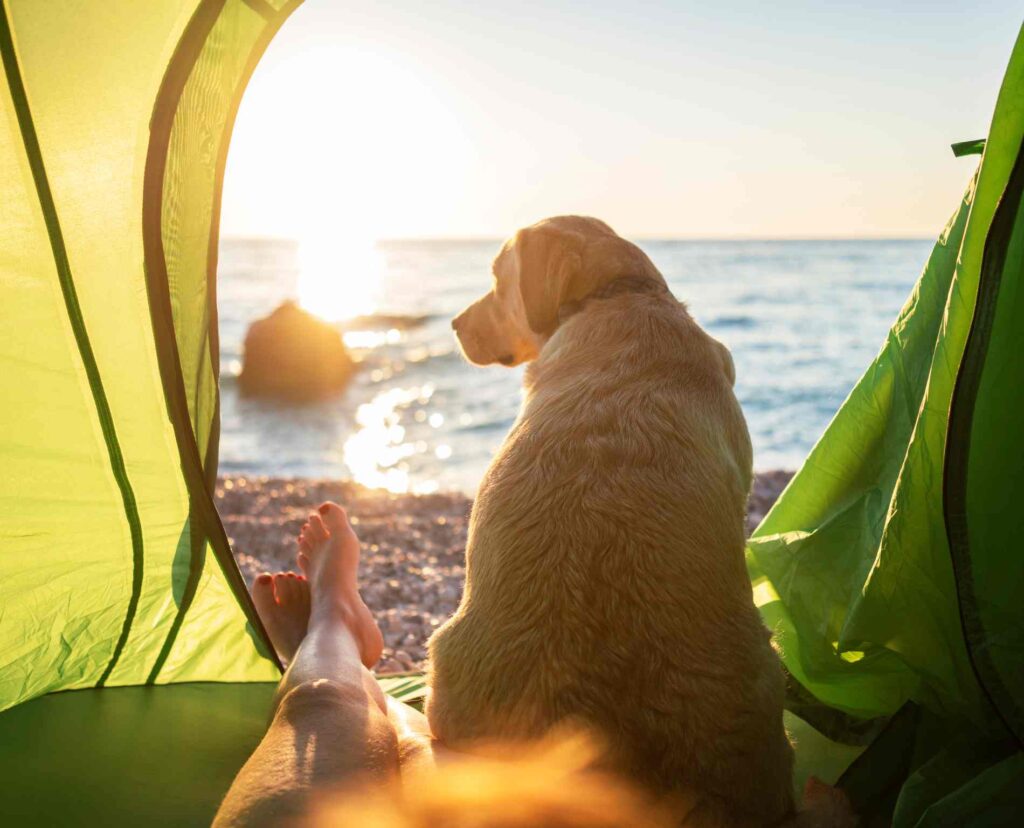
The type of tent you have can also play a role in how warm your dog stays. A four-season tent will provide better insulation and protection from the cold than a three-season tent. It’s also important to choose a tent that is the appropriate size for your dog, as a smaller tent will trap heat more effectively than a larger tent.
Size of the Tent
Make sure you choose a tent that’s large enough to comfortably accommodate both you and your dog. Your dog should have enough space to stretch out and move around, and you should be able to sleep comfortably without feeling cramped.
Tent Ventilation
Good ventilation is important for keeping your tent comfortable and preventing condensation buildup, which can make the inside of the tent damp and chilly. Look for a tent with mesh windows or vents that can be opened or closed as needed.
Tent Material
Tents made from lightweight materials like nylon or polyester are popular for camping, but they can be less insulating than heavier, more durable materials like canvas or nylon with a higher denier rating. Consider the temperature and weather conditions you’ll be camping in and choose a tent with appropriate insulation.
Tent Shape
The shape of your tent can impact the amount of insulation it provides. Tents with a low profile or a dome shape can provide more insulation than tall, boxy tents.
Dog-friendly Tent Features
Some tents are designed with dogs in mind, with features like built-in dog beds, mesh windows for ventilation and visibility, and sturdy materials that can withstand dog claws and roughhousing.
Here are a few good tent options:
Eureka El Capitan 2+ Outfitter 2-Person Tent
This four-season tent will keep you plenty warm even on the coldest of nights. It has plenty of room for both you and your dog. The dome structure of the tent provides a sturdy shelter that can withstand wind, rain, and snow. With ample floor space and head and shoulder room, you can sleep soundly or wait out a storm comfortably. Additionally, the tent features two doors and vestibules that provide easy access and ample storage space for your gear.
Black Diamond Firstlight 2-Person Tent
Designed for an adventurer and a dog, the Black Diamond Firstlight 2-Person Tent is a minimalist 4-season shelter that’s ideal for winter camping, ski touring, and alpine climbing. Its lightweight, single-wall design allows for easy packability and transportation, making it a practical choice for outdoor enthusiasts on the move. The tent can be pitched swiftly from the inside out, and its freestanding structure and steep sidewalls effectively prevent snow accumulation.
ALPS Mountaineering Tasmanian 2-Person Tent
Although one of the more affordable 4-season tents available, the ALPS Mountaineering Tasmanian 2 performs well in typical four-season conditions. It’s a reliable option for most trips, such as snow camping at or below treeline, and is likely to meet the needs of you and your dog.
Size and Breed of the Dog you are Camping With

The size and breed of your dog are important factors to consider when planning a camping trip. Larger dogs will generally require more space to move around and stretch out. It’s important to choose a tent that’s large enough to accommodate both you and your dog comfortably.
Additionally, certain breeds may be more prone to feeling cold or uncomfortable in certain weather conditions. Research the specific needs of your dog’s breed and plan accordingly.
For example, short-haired breeds like Chihuahuas or Greyhounds may require additional insulation or blankets to stay warm in cooler temperatures. Conversely, thick-coated breeds like Huskies or Malamutes may require extra ventilation or cooling measures in warmer weather.
Additionally, it’s important to consider your dog’s overall health and fitness level when planning a camping trip. Dogs that are overweight, elderly, or have medical conditions may require additional accommodations or modifications to ensure their comfort and safety.
Tips for Keeping Your Dog Warm in the Tent
There are several ways to keep your dog warm in a tent, which we’ll talk about next.
Use a Dog Sleeping Bag or Bed
Using a dog sleeping bag or bed is a great way to keep your furry friend warm and comfortable while camping. These products are specifically designed for dogs and provide added insulation and cushioning. They’re available in a range of sizes and styles, and some even come with built-in heating elements.
A dog sleeping bag, like this Ruffwear bag or can help prevent your dog from getting cold and restless at night, which can help you both get a good night’s sleep. Additionally, many dog sleeping bags and beds are designed to be lightweight and packable, making them easy to bring along on camping trips.
A dog sleeping bag or bed will provide your dog with a comfortable and warm sleeping surface inside the tent. Make sure the sleeping bag or bed is appropriately sized for your dog.
Add a Blanket or Pad
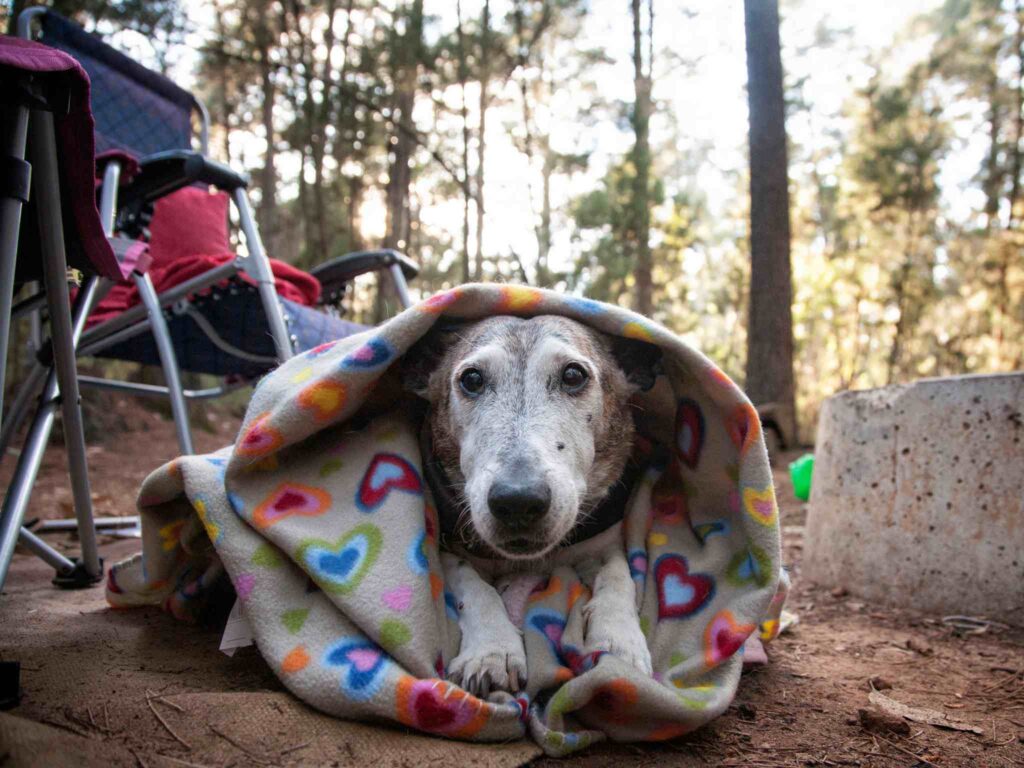
You can use a blanket or pad, like this Ruffwear Highlands Dog Pad or the Kurgo Waterproof Dog Bed to create an extra layer of insulation between your dog and the ground. This will help prevent heat loss through conduction.
Adding a blanket or pad to your dog’s sleeping area can provide additional warmth and comfort while camping. A soft, insulated blanket can help keep your dog cozy and provide a layer of insulation from the cold ground.
You can also use a foam or air pad to add cushioning and insulation to your dog’s sleeping area. These products can be purchased specifically for dogs or you can repurpose items you already have at home. Adding a blanket or pad is a simple and affordable way to improve your dog’s camping experience.
Use a Dog Coat or Sweater
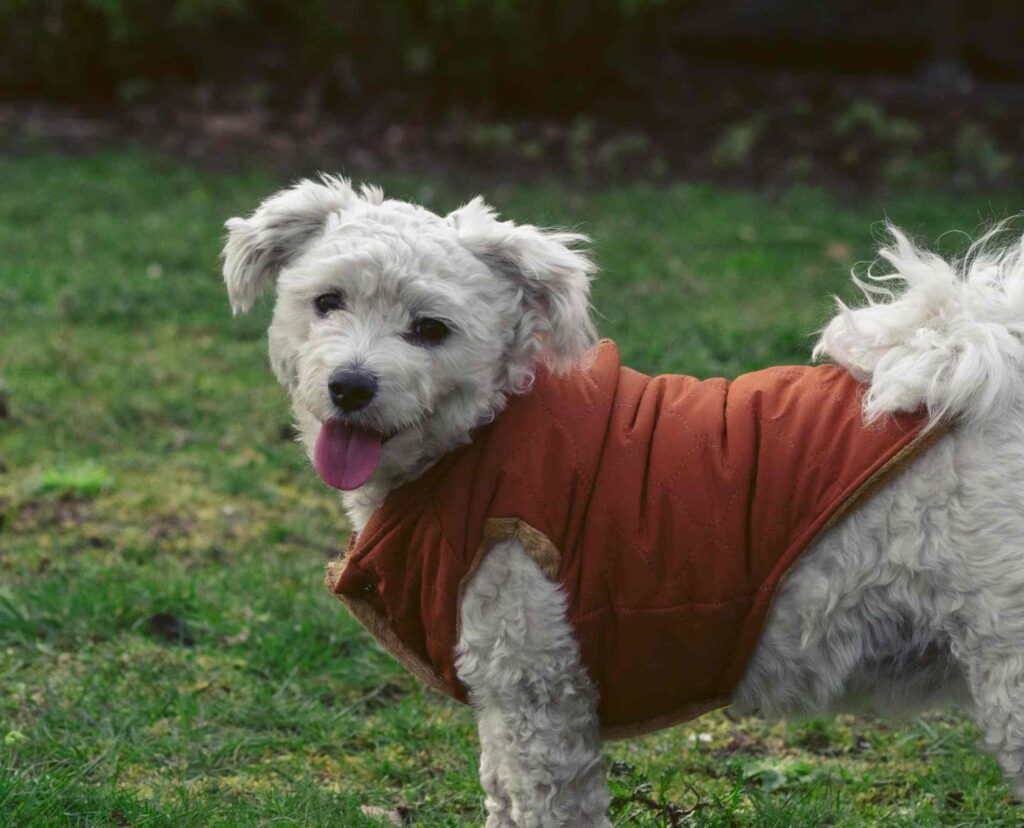
A dog coat or sweater, like this Fuamey Dog Coat, will help keep your dog’s body heat in and protect them from the cold air. Make sure the coat or sweater fits properly and covers your dog’s chest, back, and stomach.
These products come in a range of materials, from fleece to waterproof options, and can provide added insulation and protection against the elements. A well-fitted dog coat or sweater can also help prevent your dog from losing body heat through their fur.
Additionally, many dog coats and sweaters come with reflective materials or bright colors, which can help keep your dog visible in low-light conditions. The Ruffwear Lumenglow is a good example. When choosing a dog coat or sweater, make sure to select a size and material that’s appropriate for your dog’s breed, size, and activity level.
Share Body Heat
Sharing body heat with your dog can be a simple and effective way to keep them warm while camping. This can be done by sleeping close to your dog or even cuddling up with them inside your sleeping bag.
The extra body heat can help regulate your dog’s body temperature and prevent them from getting too cold. However, it’s important to make sure your dog is comfortable with this type of contact and that they have enough space to move around if needed.
Additionally, be sure to monitor your own body temperature and avoid overheating or sweating excessively, which can be uncomfortable for both you and your dog.
Use a Hot Water Bottle
A hot water bottle wrapped in a towel or blanket can provide warmth for your dog. Just make sure the water isn’t too hot and that the bottle is securely wrapped.
Using a hot water bottle can be a great way to keep your dog warm and cozy while camping. Simply fill a durable, leak-proof bottle with hot water and wrap it in a towel or blanket before placing it in your dog’s sleeping area.
The heat from the bottle can provide added warmth and comfort throughout the night. Be sure to use a hot water bottle with a secure lid to avoid any leaks or spills. You can also purchase specialized dog-specific hot water bottles with features like chew-resistant materials and insulation for added safety and effectiveness.
However, it’s important to monitor your dog’s behavior around the hot water bottle and make sure they don’t chew on it or overheat.
Use a Tent Heater
If you have access to electricity or propane, you can use a tent heater to provide warmth inside the tent.
Using a tent heater can help keep you and your dog warm during cold camping trips. These heaters come in a range of sizes and fuel types, including propane, electric, and wood-burning options.
Be sure to choose a heater that’s appropriate for the size of your tent and that’s rated for indoor use. It’s also important to follow all safety instructions and never leave the heater unattended while in use.
While tent heaters can be effective at providing heat, they also come with risks like fire, carbon monoxide poisoning, and oxygen depletion. Always use a carbon monoxide detector and make sure your tent is well-ventilated while using a heater.
However, make sure to follow all safety instructions and never leave the heater unattended.
Use a Thermal Blanket

A thermal blanket can reflect your dog’s body heat back to them, keeping them warm and comfortable throughout the night. You can also use a space blanket or emergency blanket, which are lightweight and packable.
Using a thermal blanket can be a lightweight and compact way to provide added warmth for your dog while camping. These blankets are designed to reflect your dog’s body heat back to them, providing a layer of insulation between your dog and the cold ground.
Some thermal blankets are also waterproof, which can help keep your dog dry in damp or snowy conditions. When using a thermal blanket, make sure to place it underneath your dog’s bed or sleeping area for maximum effectiveness.
Additionally, be sure to choose a size that’s appropriate for your dog and that’s easy to pack and carry with you on your camping trip.
Consider a heated dog bed
If you’re camping with a power source, a heated dog bed can be a great way to keep your dog warm and cozy.
A heated dog bed, like the Yimobra 14 x 18 Pet Heating Pad can be a comfortable and effective way to keep your dog warm during cold camping trips. These beds come in a variety of sizes and styles, including battery-operated and electric options. Some heated dog beds are also designed with waterproof or chew-resistant materials for added durability in outdoor environments.
However, it’s important to choose a heated dog bed that’s appropriate for the size of your tent and that’s safe for indoor use. Always follow the manufacturer’s instructions and make sure the bed is placed on a flat, stable surface away from any flammable materials.
Additionally, keep an eye on your dog’s behavior around the heated bed and make sure they don’t overheat or chew on any cords or wires.
Use a dog crate
A dog crate can help trap your dog’s body heat and provide them with a cozy and warm sleeping space. You can cover the crate with a blanket to make it even warmer.
Using a dog crate can provide a secure and cozy sleeping space for your dog while camping. Crates come in a range of sizes and materials, including soft-sided and collapsible options for easy packing and transport.
When using a dog crate, make sure it’s large enough for your dog to stand up, turn around, and lay down comfortably.
Additionally, line the crate with a blanket or pad for added warmth and comfort. Keep in mind that not all dogs are comfortable in crates, so it’s important to acclimate your dog to the crate before your camping trip.
You can do this by gradually increasing the amount of time your dog spends in the crate and by rewarding them with treats and praise for good behavior.
Keep your Dog Dry
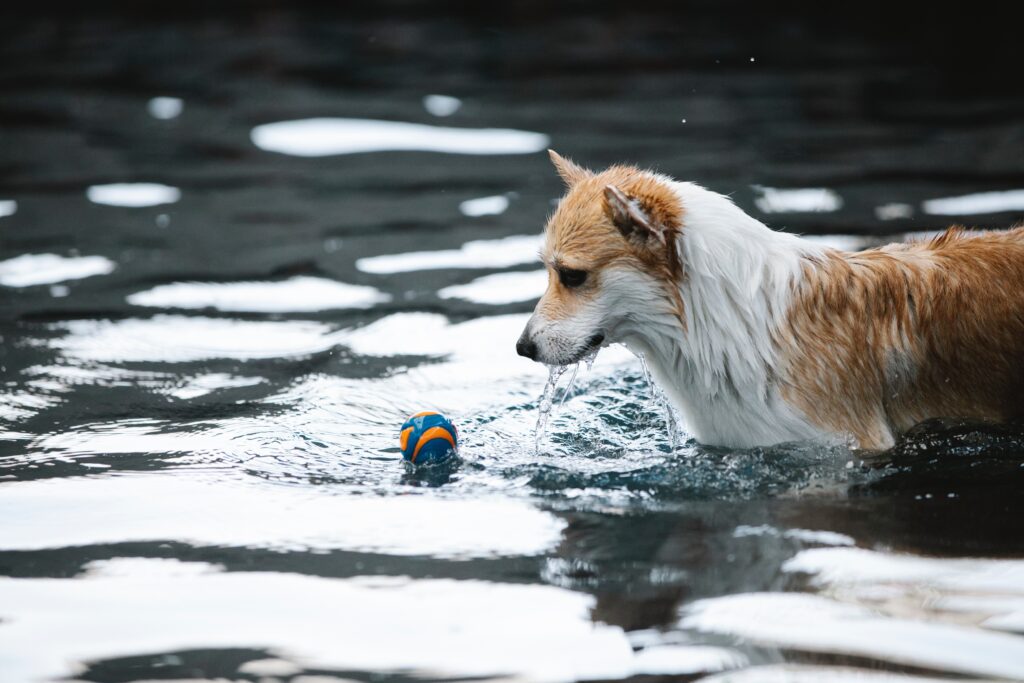
Wet fur can cause your dog to lose body heat quickly, so make sure to keep your dog dry, especially during rainy or snowy weather. You can bring a towel or dog raincoat to help keep them dry.
Keeping your dog dry while camping is essential for maintaining their body heat and preventing hypothermia. Make sure your dog has access to a dry, sheltered area in your tent, and avoid exposing them to rain or snow for extended periods.
Consider using a waterproof dog coat or rain jacket to protect your dog from moisture, and wipe them down with a towel or drying cloth after outdoor activities. Additionally, place a waterproof pad or blanket underneath your dog’s sleeping area to prevent moisture from seeping in from the ground.
Paying attention to your dog’s body language and behavior can also help you identify signs of discomfort or cold, so be sure to check on them regularly and make adjustments as needed.
Feed Your Dog High-quality Food
A cold dog burns more calories than a warm dog. High-quality food can help keep your dog’s metabolism up, which generates body heat and helps keep them warm.
Feeding your dog high-quality food is important for maintaining their health and energy while camping. Look for food that is high in protein and healthy fats, and avoid foods with fillers or artificial preservatives.
Consider bringing along some treats or snacks for your dog, but be mindful of overfeeding. Additionally, make sure your dog has access to clean, fresh water throughout your camping trip to prevent dehydration.
Keep in mind that your dog’s nutritional needs may change based on their activity level and environment, so consult with your veterinarian before your trip if you have any concerns.
Conclusion
Keeping your dog warm and comfortable while camping is essential for their health and happiness. By following these tips, you can help ensure a safe and enjoyable camping trip for both you and your furry friend.
